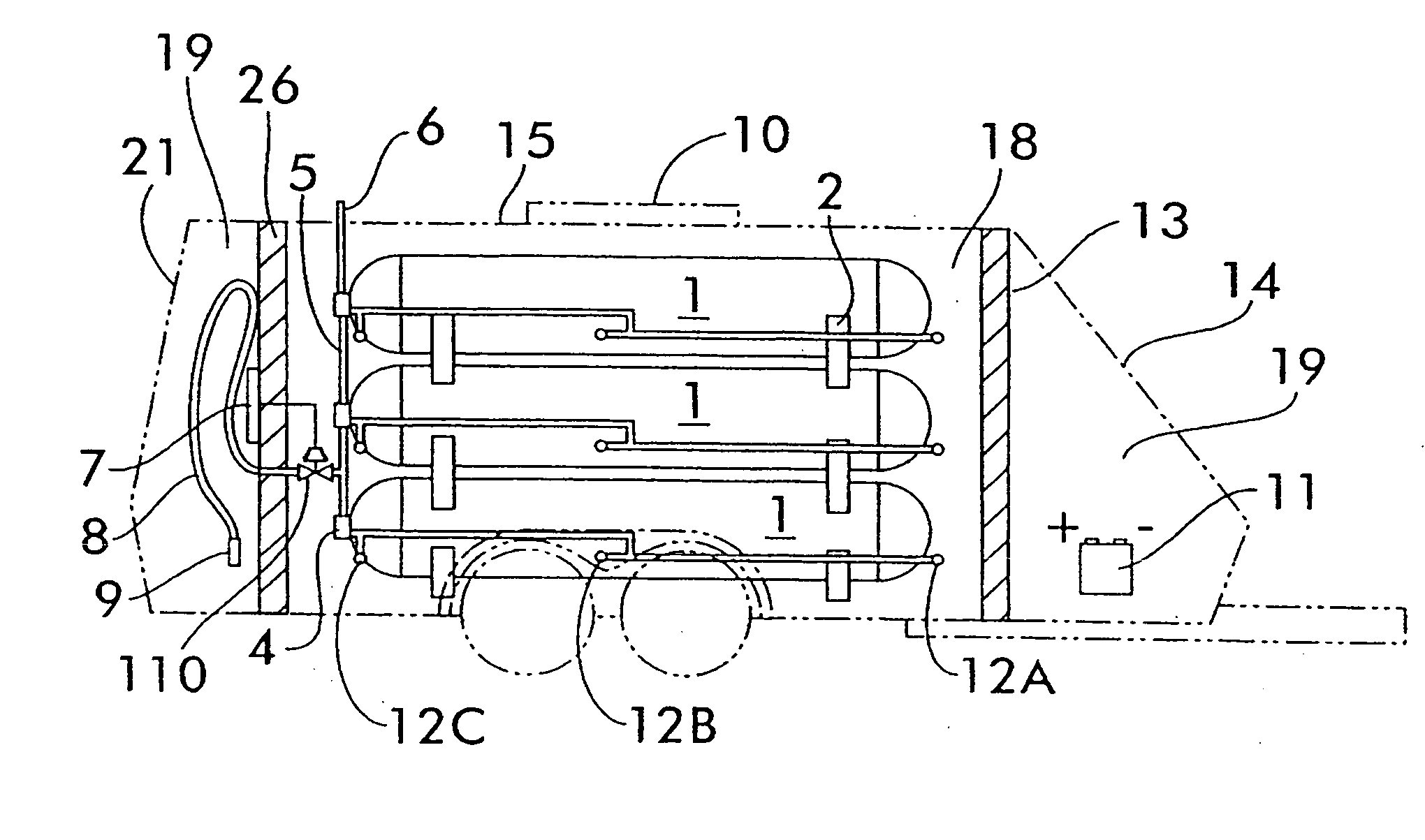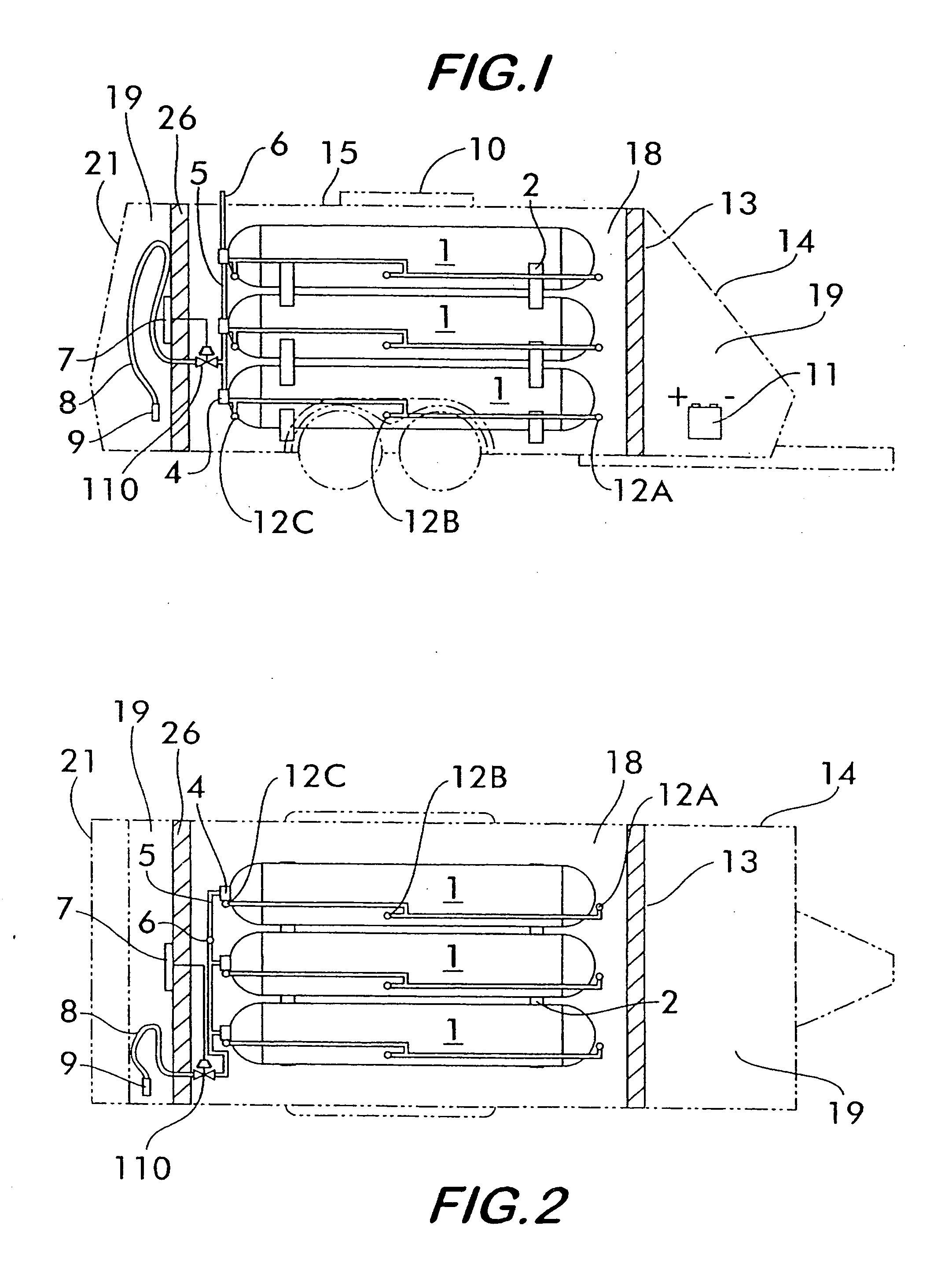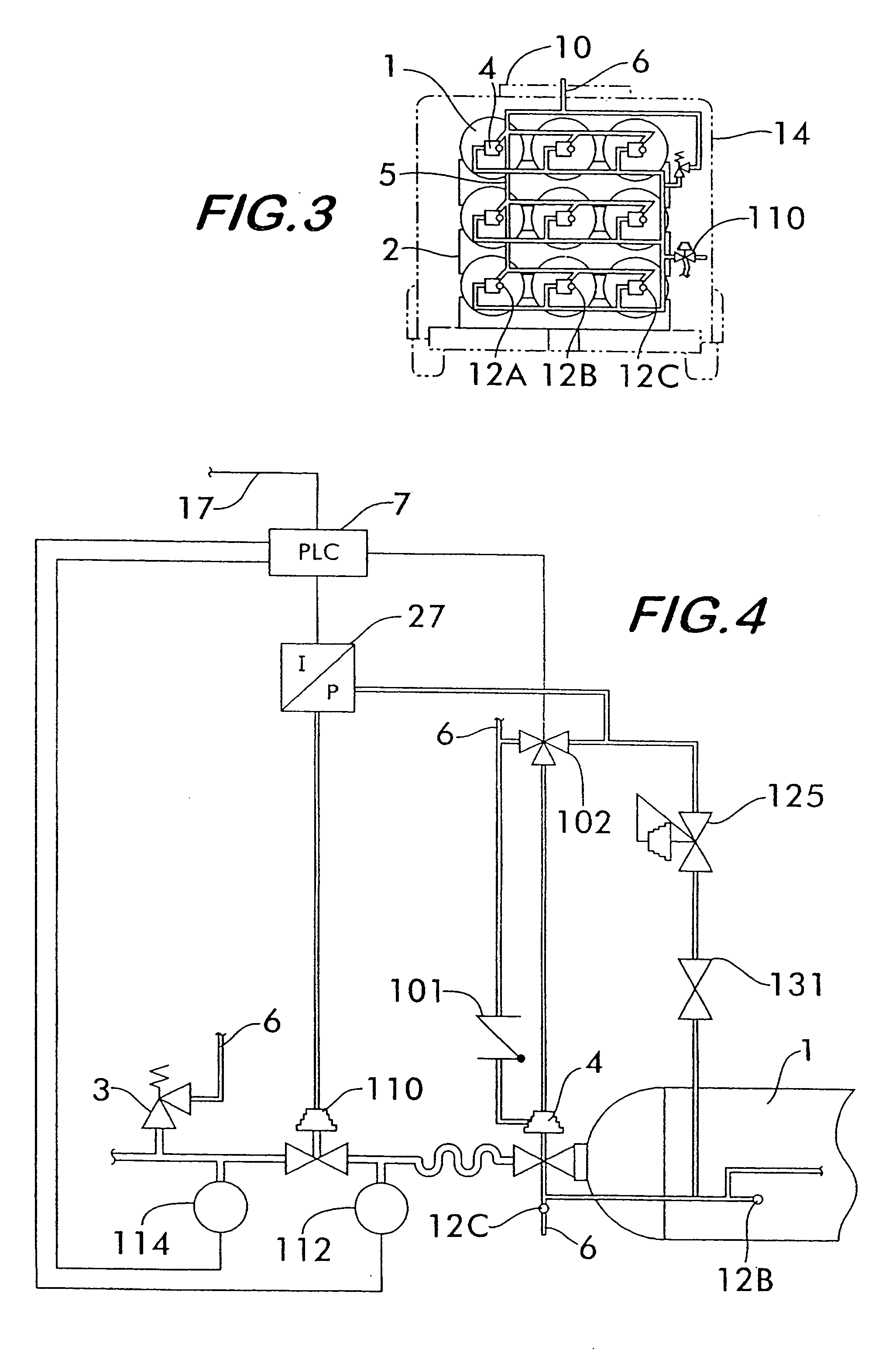Self-contained mobile fueling station
a self-contained, fueling station technology, applied in the direction of liquid handling, electrochemical generators, packaging goods types, etc., can solve the problems of insufficient fuel capacity, difficult (expensive) transportation, testing, etc., and achieve the effect of optimizing the fill ra
- Summary
- Abstract
- Description
- Claims
- Application Information
AI Technical Summary
Benefits of technology
Problems solved by technology
Method used
Image
Examples
Embodiment Construction
[0059] The present invention is a self-contained self-powered mobile fueling station that satisfies a growing need in building a hydrogen infrastructure. The fueling station leverages the benefits of cascade filling to optimize the use of available pressures and volume to provide an optimal rate of filling the fuel tank of a hydrogen-powered vehicle. Since the fueling station is self-powered, its delivery of fuel to the vehicle does not need any additional compression, and therefore does not require any hook-up to external electric power or other external utilities.
[0060] Automatic filling of a vehicle tank by the fueling station is provided by use of PLC control of interlocked solenoid operated valves. The valves are actuated either by a portion of the hydrogen gas inventory or by a regulated gas from a dedicated high-pressure cylinder, which is safer than manual operation of the valves. Power required to operate the PLC is provided by a deep cycle battery, which is recharged by r...
PUM
| Property | Measurement | Unit |
|---|---|---|
| Pressure | aaaaa | aaaaa |
| Time | aaaaa | aaaaa |
| Pressure | aaaaa | aaaaa |
Abstract
Description
Claims
Application Information
 Login to View More
Login to View More - R&D
- Intellectual Property
- Life Sciences
- Materials
- Tech Scout
- Unparalleled Data Quality
- Higher Quality Content
- 60% Fewer Hallucinations
Browse by: Latest US Patents, China's latest patents, Technical Efficacy Thesaurus, Application Domain, Technology Topic, Popular Technical Reports.
© 2025 PatSnap. All rights reserved.Legal|Privacy policy|Modern Slavery Act Transparency Statement|Sitemap|About US| Contact US: help@patsnap.com



